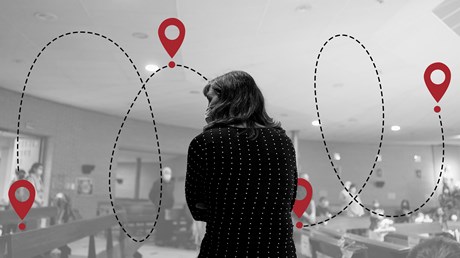Amid all the moves and changes of the past two years, many congregations saw turnover accelerate.

Houston Northwest Church suffered heavy damage from Hurricane Harvey in 2017. By the time its flooded facilities were finally rebuilt a couple years ago, the congregation was only back at full capacity for six weeks before services were shut down by the pandemic.
As the church endured one setback after another, senior pastor Steve Bezner has seen the flock ebb and flow.
“About a third of our congregation worshiping in person are new faces,” he said.
His church currently draws 1,600 attendees each week, including several hundred viewing online—not far from its pre-pandemic weekly average of 1,700. Bezner marvels at the number of members who left during the pandemic and the number of new people who have showed up to take their place.
“It will make you believe in the preservation of the Holy Spirit,” the Houston pastor said.
Member turnover is as common to the life cycle of a church as baptisms, weddings, and funerals. But the pandemic has accelerated people’s comings and goings and has required new strategies to welcome and assimilate new members into the church community. These tasks have been complicated by evolving COVID-19 precautions and the challenge of identifying who still belongs to the church, when many continue to worship online.
“Not gathering stirred up these questions,” said Steve Smith, executive pastor of Highpoint Church in Naperville, Illinois. “The gospel hasn’t changed, and we are still Bible-centric, but how we engage people is changing.”
COVID-19 has propelled people toward life change of all kinds over the past two years, including career shifts, new relationships, and relocation. Some changes have been out of necessity and some out of new priorities; ...
from Christianity Today Magazine
Umn ministry


.gif)

.gif)
.gif)
